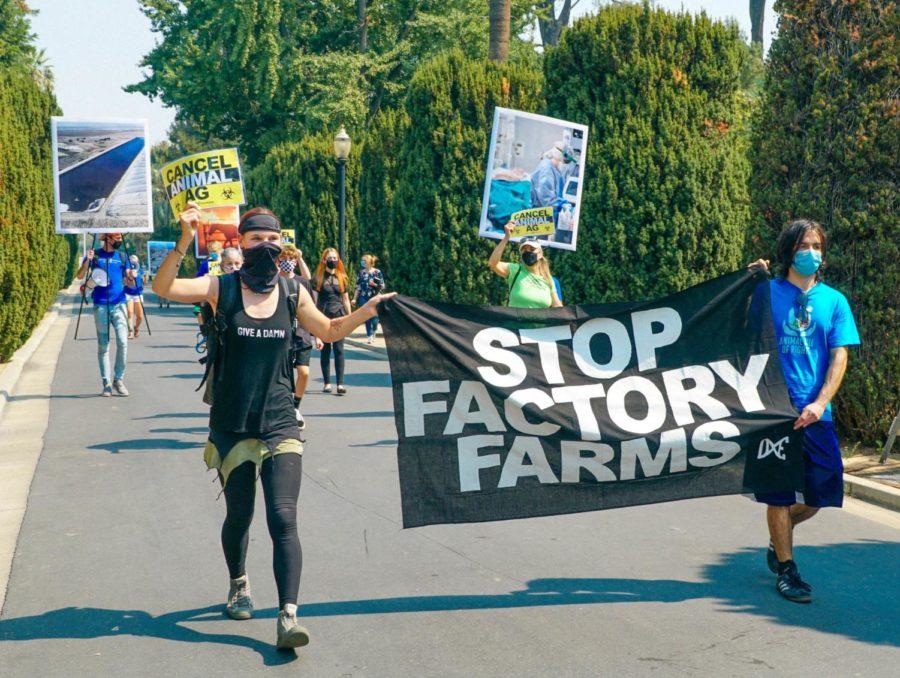Schmitt: Are factory farms sustainable?
August 20, 2021
As an Iowa native, I have always understood that agriculture plays a tremendous role in developing the state’s identity. It is impossible for those who don’t delve into the industry to ignore its presence (flashback to the Interstate 80 Iowa song — corn, corn, corn. Look, a tree!). But other than corn and soybeans that make up Iowa agriculture, we have pigs, cattle, sheep and other livestock that contribute to the industry.
Iowa and the U.S. have been raising livestock on farms for decades and even centuries. Over the years, production efficiency has increased, along with the intensity of growing livestock. Unfortunately, the more animal agriculture has grown, so have the misconceptions about the industry.
Disclaimer: I am an agricultural advocate, meaning that I promote the agricultural industry and good practices. Most specifically, I advocate for animal agriculture and how it benefits consumers, the economy and the environment.
It is no secret that animal agriculture has become more intensive than free-range animal farming since most producers are no longer cowboys riding horses across thousands of acres of pasture, herding their livestock. In the last few decades, new terms have arisen that put a bad name on farming practices that taint the credibility of food production.
The most harmful but easily spread term/phrase is “factory farming.” By definition, factory farming is a type of intensive agriculture, specifically an approach to animal husbandry designed to maximize output while minimizing costs. However, many in the agricultural industry believe that this is a too-overarching term that does not exemplify farms that feed many pigs or cattle each year. I had this discussion with a sixth-generation family farmer who grows crops and raises cattle.
We both agreed that even though animal operations practice more intensive feeding methods to improve production efficiency, that does not mean that the health of the animals are not taken into account. The majority of farms have strict protocols for taking care of sick or crippled animals because it is unfavorable for the profit and the animal.
Larger farms are working to increase output and profit. That also means they have to improve conditions for the animals, which means investing a lot of money and time. Operations that I have talked to and worked on farms with work hard to minimize sickness among herds. All of these strategies are researched and approved by veterinarians.
However, that doesn’t doesn’t stop animal rights activist groups from criticizing farms that are practicing these methods humanely. Organizations such as PETA, or the People for Ethical Treatment of Animals, go after farms working toward sustainability and improving the quality of animal production. PETA and other groups often use tactics that violate the rights of producers or target agricultural youth.
But amid all the beef toward producers, farmers try to do what is best for their animals. Yes, they eventually go to market, but that does not mean the animal’s health is not a priority. Agriculturalists would classify real factory farms as ones working to produce the most output with the least amount of costs and not keeping animal health in mind. Fortunately, that is a very small percentage of farms.
While the Sentience Institute reported that 99 percent of farms are considered factory farms (founded and run by activists), that statistic does not represent the 95 percent of family-owned farms that will often put their animals first and raise produce food humanely.
If you ever have questions about animal agriculture, I would be more than happy to answer those questions. Many producers are also willing to answer any questions consumers have because we are in a time where more people are interested in knowing more about where their food comes from and how it is produced.

















